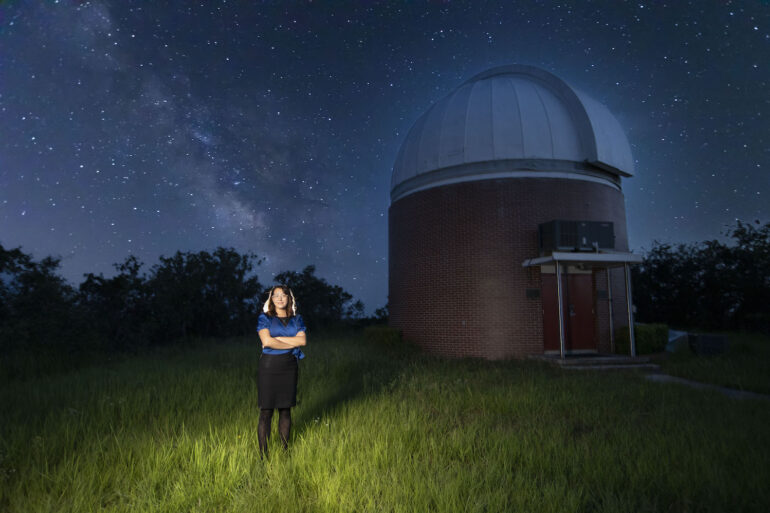A new study suggests hundreds of millions of planets in our galaxy may be in the “habitable zone” capable of sustaining liquid water. “Eyes are shifting toward this population of stars,” says its author, University of Florida Astronomy PhD student Sheila Sagear.
We asked her to tell us about her work and these intriguing planets beyond our solar system.
How has the reaction been to the paper?
I’m thrilled that other astronomers are finding our results to be interesting and useful. I was surprised to see as many media articles as I did on our paper, but I think it’s great that our result is reaching science enthusiasts along with scientists! If reading about our work gets more people interested in astronomy and exoplanets, then that makes me very happy. Of course, my family was excited too — my parents put it on the fridge.
What surprised you most about the findings?
The most surprising thing we found was that planets around M dwarfs, these extremely small stars, have similar orbital eccentricities to planets around larger stars, like our Sun. There are many differences between these types of stars and the planets that form around them, so the fact that the eccentricity distribution is so similar across different types of stars suggests something interesting about how planets form and evolve around all types of stars. I’m really looking forward to exploring that more!
In your time at UF, what has been key to your success?
My PhD advisor, Professor Ballard, is just the best. She is not only a brilliant scientist but also an incredibly kind and supportive mentor. Working with her has allowed me to really thrive as a scientist and do the best work I’m capable of doing. The other grad students in the astronomy department are also great people — we have such a good community!

What’s next?
I’m planning to look into how the orbits of planets evolve over time. I’d like to see if there’s any relationship between a planet’s eccentricity and the age and composition of its star. We’re getting a lot of new data from telescopes like Gaia and TESS that will help us do this, and I’m so excited to see what we find.
More on Sagear and Ballard’s study from UF News: https://news.ufl.edu/2023/05/exoplanet-habitability-/.

